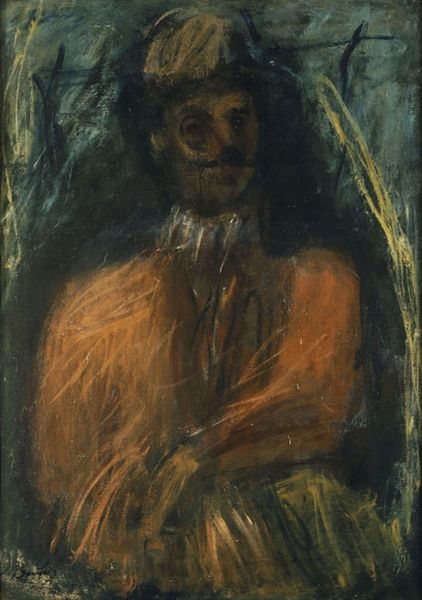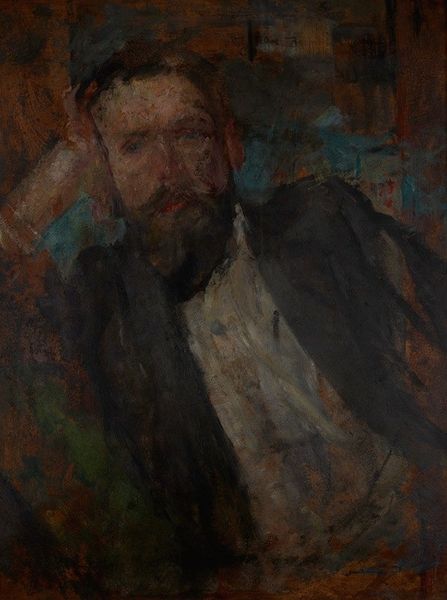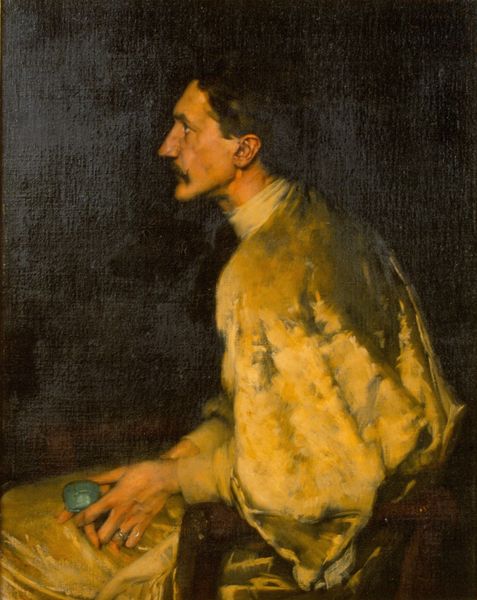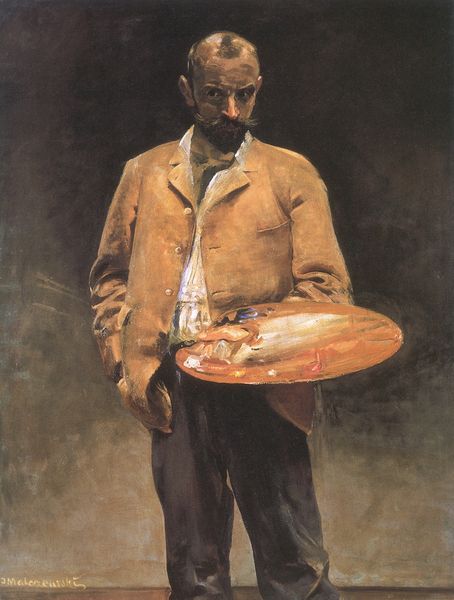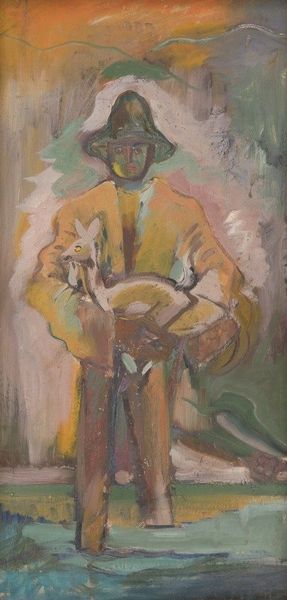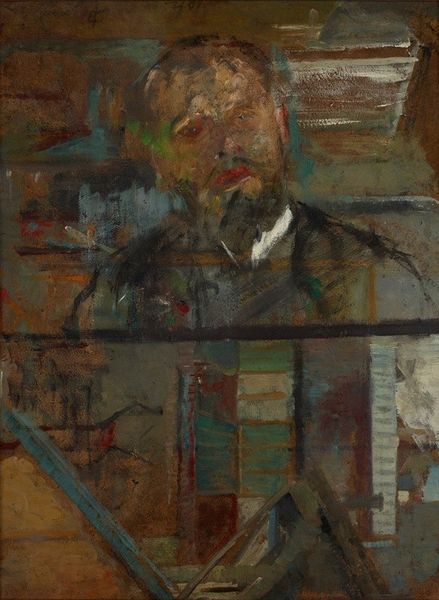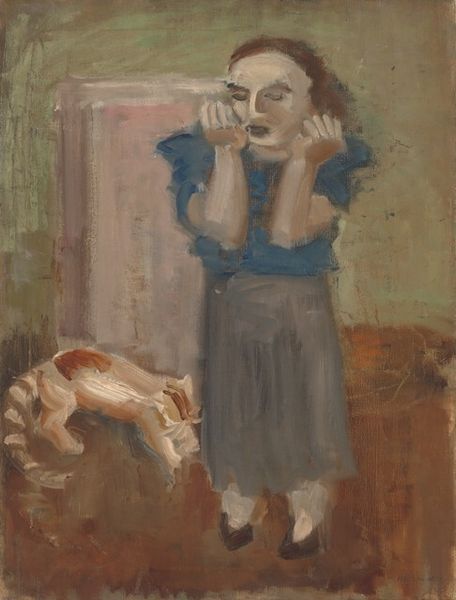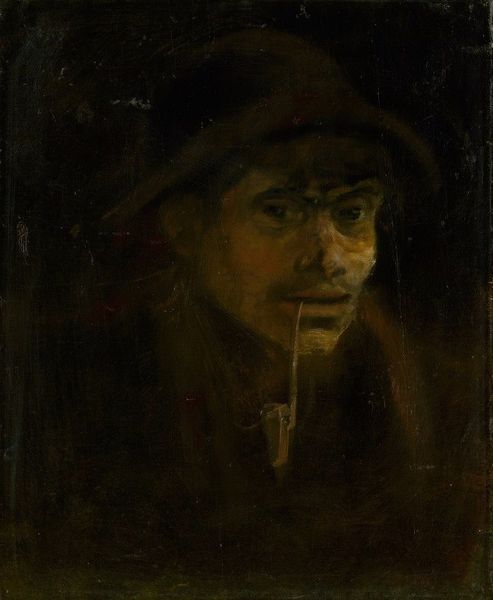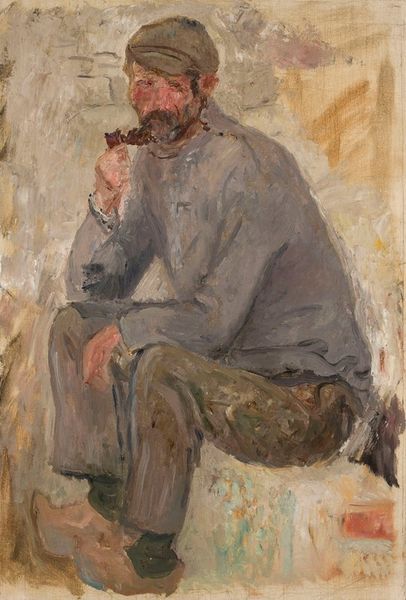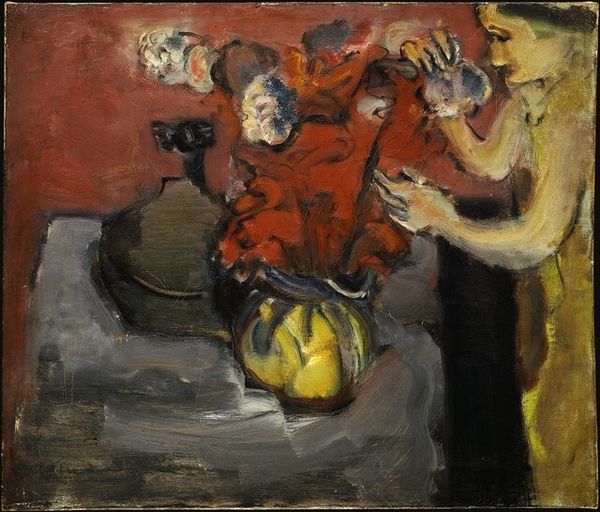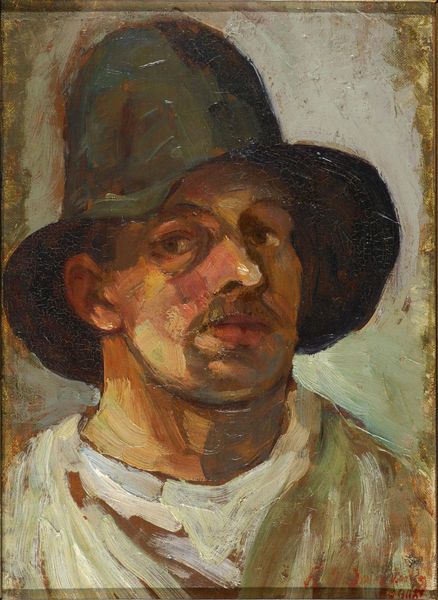
Dimensions: 100.2 cm (height) x 65.3 cm (width) (Netto), 110.2 cm (height) x 80 cm (width) x 8.3 cm (depth) (Brutto)
Curator: The atmosphere of Karl Isakson’s "Self-Portrait," painted in 1908, strikes me as both introspective and somber. The muted palette and hazy background contribute to this feeling, don’t you think? Editor: It feels constrained. The sombre hues, rendered in visible brushstrokes, suggest the labor involved and perhaps even the limited availability of materials. What paints were accessible? Where did he source them? It invites consideration of the economic conditions affecting artistic production at that time. Curator: I see your point, but I’m more captivated by the artist's gaze, his palette in hand. Note the delicate rendering of light on his face versus the looser, almost ghostly figures in the background. How would you decode this contrast, if you see it that way? Editor: It speaks to the relationship between the artist's self-perception and his working conditions. Holding a painter's palette signifies craft and labor, but there's an evident attempt to differentiate between the portrait itself as commodity and its messy, tangible production. The muted colour scheme surely reflects the limited choices presented at that time for such working men. Curator: That’s fascinating. To me, though, that blurring of background forms acts as a clever way to unify the composition, drawing attention to the distinct elements – the man, the tools, the artistic endeavor, perhaps his self-mythologising. Editor: Yes, and we shouldn't discount that this work would be sold at market. The act of making art for a profit under capitalism introduces very concrete implications when studying the final piece and how it affects reception. Curator: Perhaps. On the other hand, thinking more broadly about the style and brushwork we may be witnessing the development of personal artistic language... Editor: Possibly, and at what cost! But I find myself focused on this artwork as an interesting object from the period's material history; this informs my reaction above any purely aesthetic consideration. Curator: An insightful note to conclude. For me, Karl Isakson offers us both an observation and quiet moment of contemplation.
Comments
No comments
Be the first to comment and join the conversation on the ultimate creative platform.
